 Written by Andrei Zakhareuski. With over 16 years of expertise, Andrei leads Driving-Tests.org, a top online resource for driver education. His leadership has established vital partnerships with over 2,600 libraries, educational bodies, and state agencies.
Written by Andrei Zakhareuski. With over 16 years of expertise, Andrei leads Driving-Tests.org, a top online resource for driver education. His leadership has established vital partnerships with over 2,600 libraries, educational bodies, and state agencies.Essential Steps for a CDL
1
Age Requirement
Minimum 21 years old for interstate driving, 18 for intrastate.
2
Driver Training
Mandatory FMCSA-approved training for Class A or B. More info.
3
Application and Fee
Submit your state’s CDL application and pay the fee.
4
Identity and SSN Verification
Provide proof of identity and Social Security number.
5
Proof of Residency
Show evidence of state and US residency.
6
Medical Documentation
Submit Medical Examination Report and Examiner’s Certificate Forms.
7
Vision Test
Clear a vision test.
8
Knowledge Exam
Pass the CDL knowledge exam.
9
Commercial Learner's Permit (CLP)
Obtain a CLP after passing the knowledge exam. Learn more.
10
Skills Exam Wait Period
Wait 14 days before scheduling your CDL road skills exam.
11
Pre-Trip Inspection
Pass a pre-trip inspection test.
12
Road Skills Test
Successfully complete the road skills test (vehicle required).
13
Finalization and Fees
Pay fees and potentially submit a 10-Year Record Check. More details.


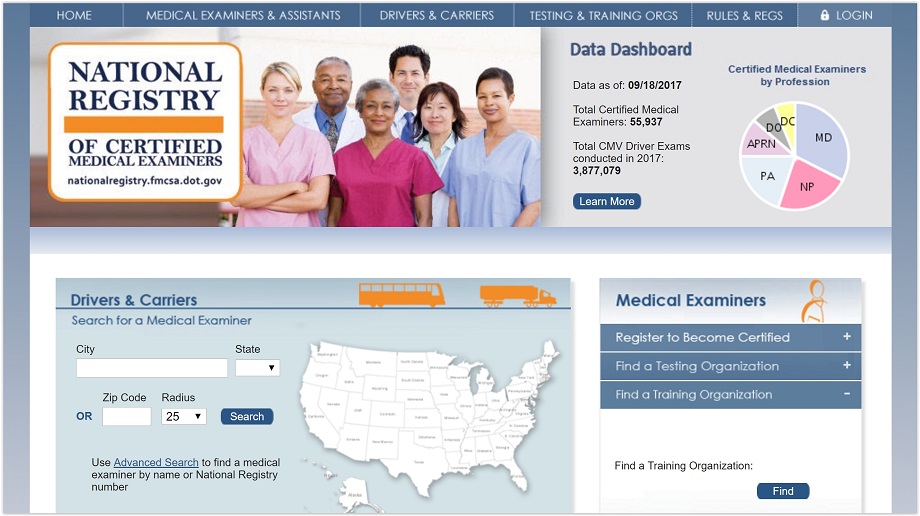
Key Forms
- Medical Examination Report (MER) Form, MCSA-5875 Download
- Medical Examiner’s Certificate (MEC), Form MCSA-5876 Download
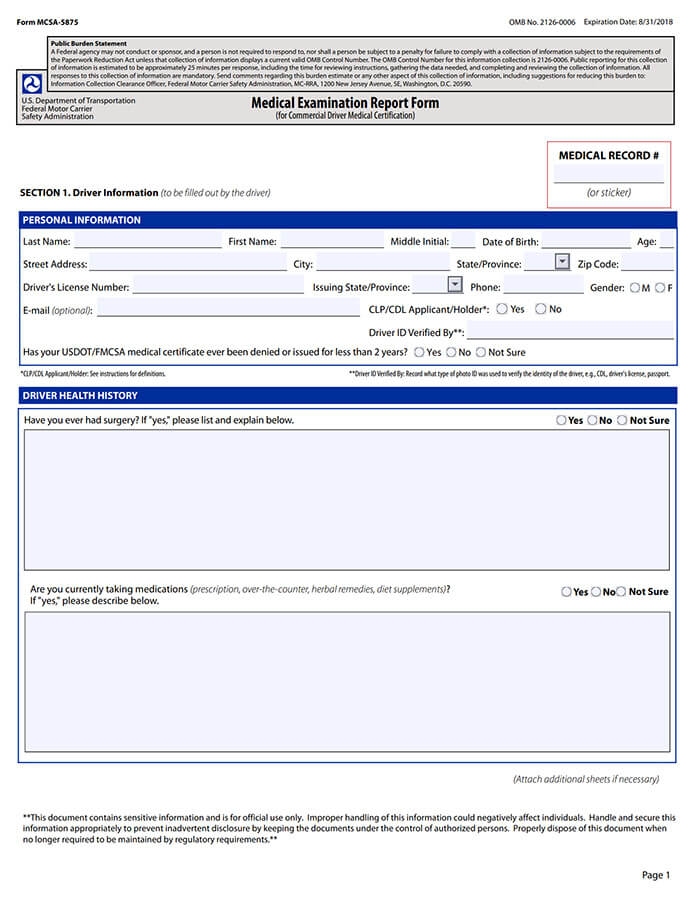
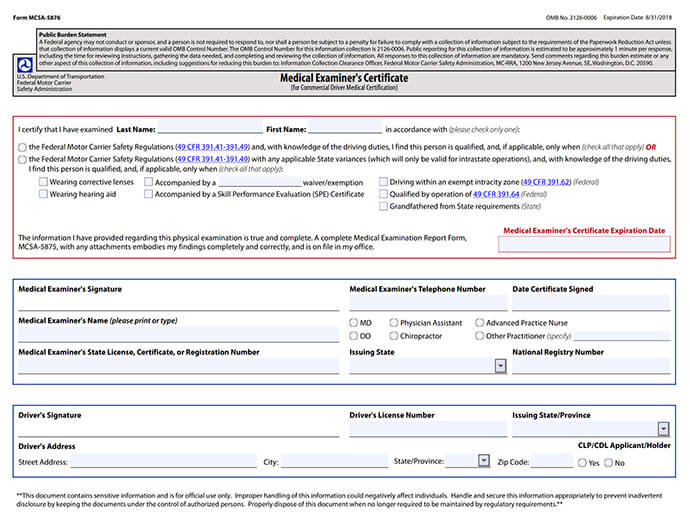
Find out how to obtain what you need:
Class-Specific Requirements
Class A
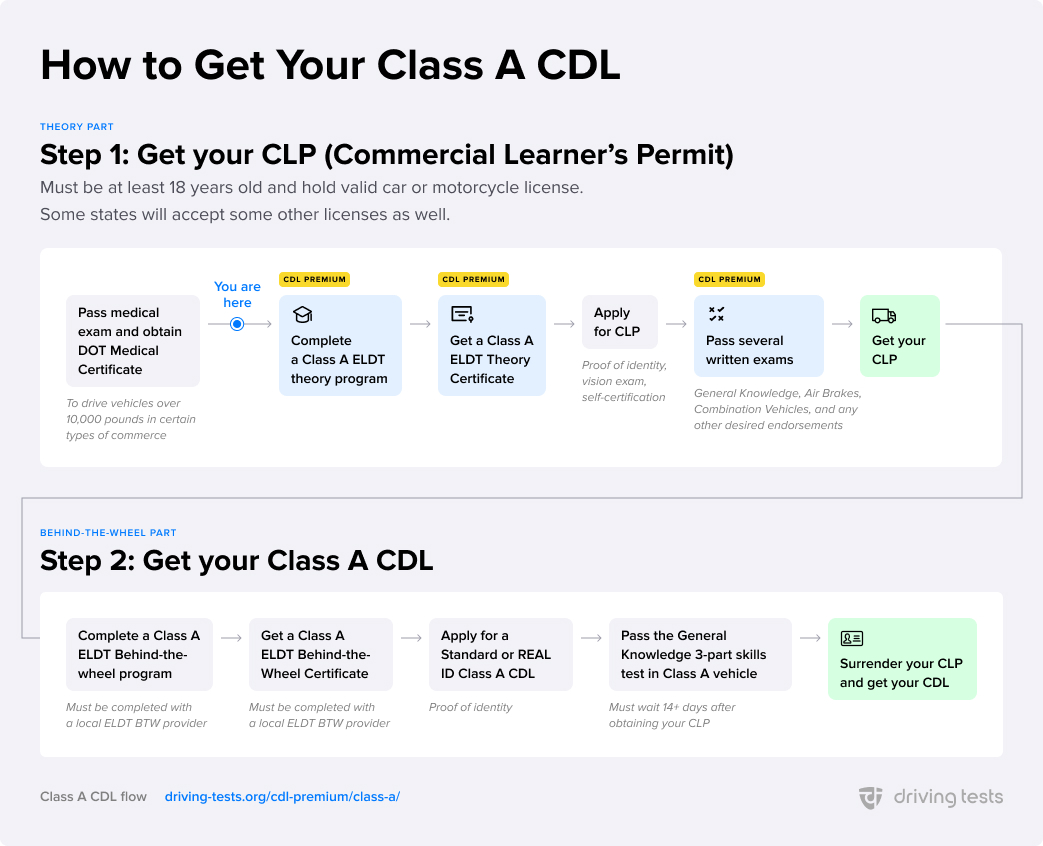
- Complete FMCSA-approved theory and BTW training.
- Pass CDL General Knowledge and Combination Vehicles tests.
- Bring a Class A vehicle to your road skills test.
- Consider Class A endorsements like Doubles/Triples.
Class B
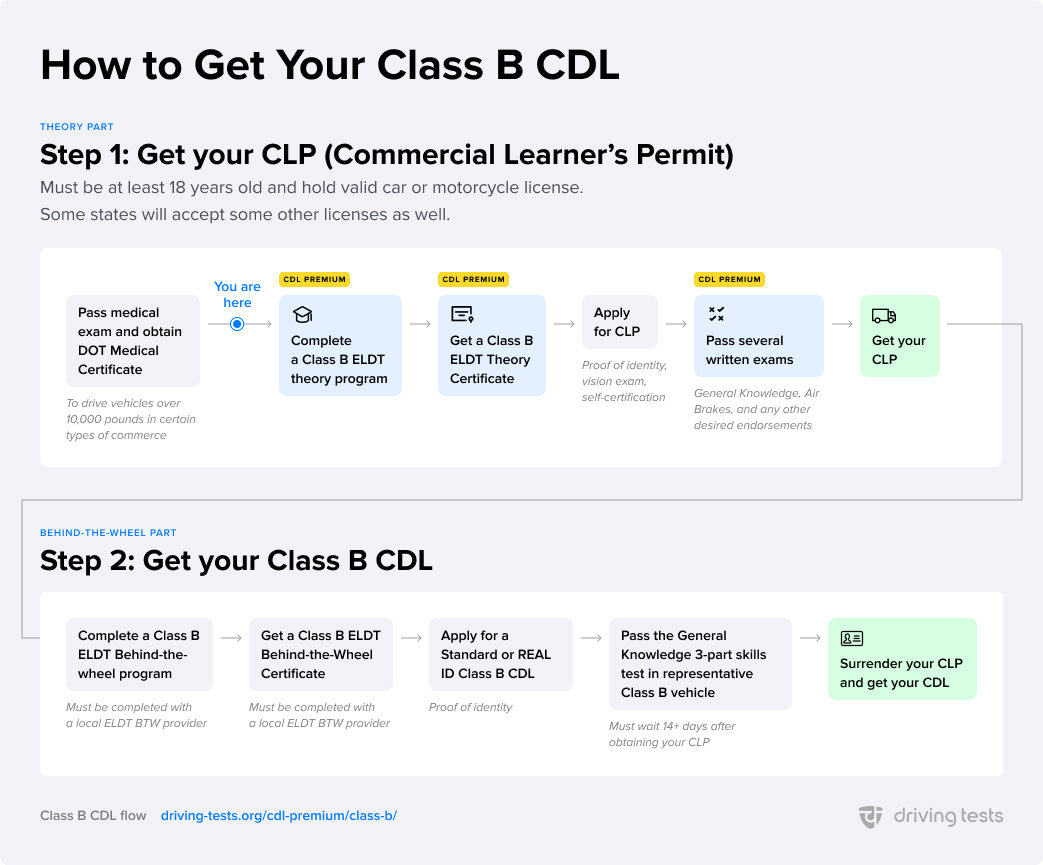
- Complete FMCSA-approved theory and BTW training.
- Pass the general CDL knowledge test.
- Bring a Class B vehicle to your road skills test.
- Obtain necessary endorsements (e.g., Air Brakes).
Class C
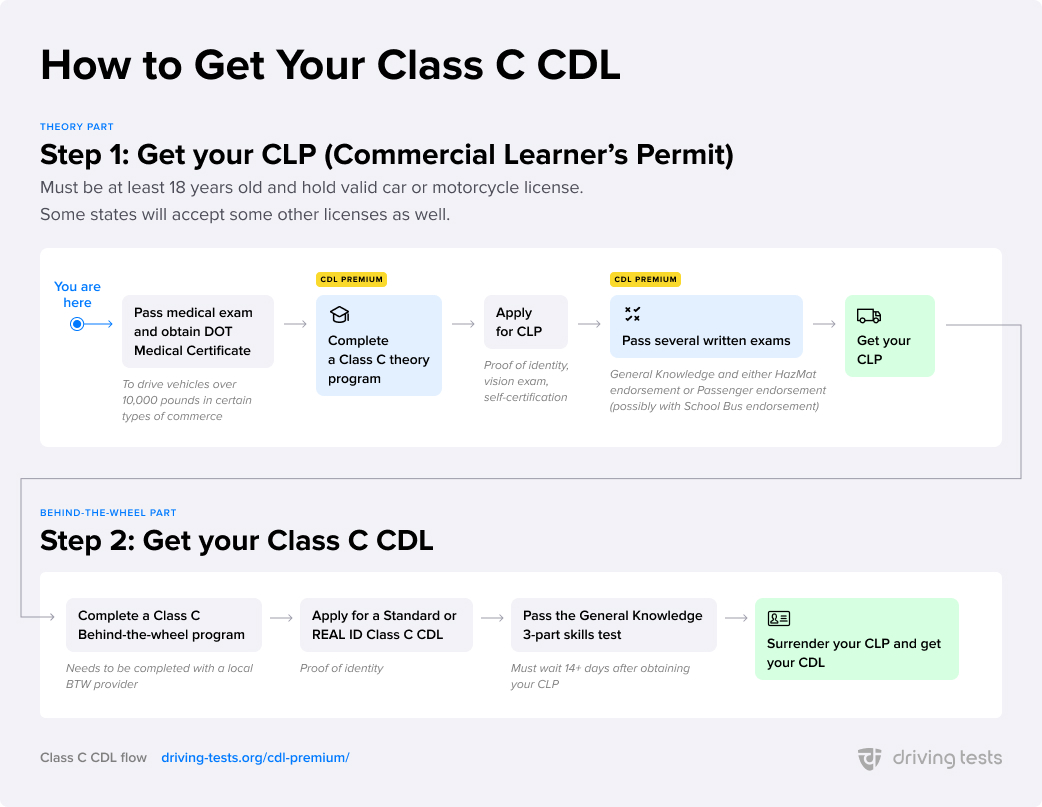
- Pass the CDL General Knowledge test and get a CLP.
- Bring a Class C vehicle to your road skills test.
- Apply for required endorsements (Passenger, School Bus, Hazmat).
Things You Don’t Need
- A truck driving school is not mandatory.
- No need to purchase your state’s CDL manual.
Secure your CDL with confidence!
Our exclusive CDL Premium program offers comprehensive online training with an ELDT certificate, authentic exam questions, and a solid Pass Guarantee, starting at only $69. Ideal for first-time applicants, seasoned drivers, and those new to the U.S. road rules.Explore CDL Premium